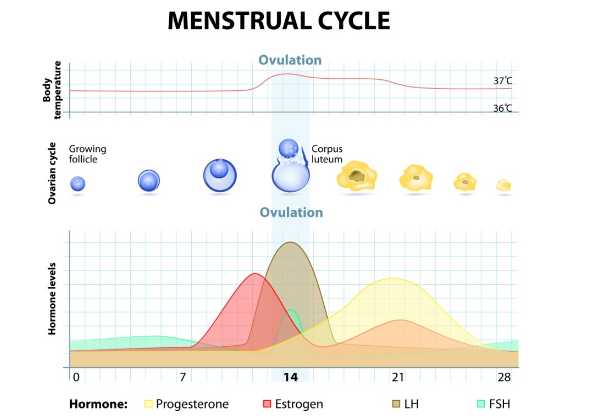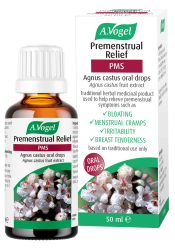An introduction to ovulation
Ovulation is the release of an egg from your ovaries and is necessary in order for you to fall pregnant or otherwise, have your period. Ovulation is also an important stage of your menstrual cycle and if you aren’t ovulating, it’s likely you won’t have a period.
On this page, I explain what hormones are responsible for initiating ovulation, how you can keep a track of it, what symptoms or signs indicate that you are ovulating and how different methods of contraception can have an influence.
What is ovulation and the phases of the menstrual cycle?
Most women think of their period when they hear the ‘menstrual cycle’ being mentioned. This is of course a part of it, but actually, the days you are on your period, only accounts for approximately 20% of what is known as the menstrual cycle.
So, what is happening the rest of the time and why is this important? The menstrual cycle can be split into four key phases. The days of each phase below are based on an average woman.

1. The menstrual phase (days 1-5) – Most women are aware of the menstrual phase. The menstrual phase begins on day 1 of woman’s period and lasts for approximately 5 days until the bleeding subsides. During this phase the lining of the uterus is shed and the menstrual fluid leaves out through the vagina – this is what you call ‘your period’. Some women experience symptoms each month and there are different types of periods, from heavy, to painful to irregular – no two women will have exactly the same experience
2. The follicular or proliferative phase (days 1 -13) – The follicular phase also begins on the first day of your period and continues until half way through your cycle. Throughout this phase your hypothalamus stimulates your pituitary gland to release a hormone called follicle stimulating hormone (FSH). This causes a follicle within one of your ovaries, containing an egg, to mature. As this follicle matures, it initiates an increase in oestrogen which allows the lining of your womb to develop
3. Ovulation (day 14) – Around day 14 of your cycle ovulation occurs as oestrogen peaks. This causes the pituitary gland to release a surge of luteinising hormone (LH). This hormone causes your ovary to release the matured egg which is swept into your nearby fallopian tube
4. The luteal or secretory phase (days 15-28) – The luteal phase of your menstrual cycle occurs immediately after ovulation and continues until the end of your cycle. During this time the releases egg travels towards the uterus and has around 24 hours to become fertilized by sperm. Sperm can survive longer than an egg so, having entered the uterus up to approximately 5 days earlier they are still able to fertilize your egg. Progesterone levels also rise during this phase in order to prepare the womb in anticipation of the egg becoming fertilized and implanted. However, if the egg doesn’t become fertilized, the egg disintegrates and levels of your oestrogen and progesterone begin to decrease rapidly. The drop in these hormones initiates contractions of the smooth lining of your womb and the menstrual phase begins again.
How do you know when you are ovulating?
So, how do you know when you are ovulating and why is this important?
It can be important for a number of reasons; knowing when you are likely to ovulate usually means you have a pretty good idea of your cycle length and therefore you are more likely to successfully predict when your period is due – this also means you are more aware of when some of the associated symptoms might crop up. Also, ovulating each month suggests everything is working as it should, if you aren’t ovulating you may have a hormone imbalance.
However, often the most common reason women want to know when they are going to ovulate is in order to have a better chance of falling pregnant. Your egg only lasts for approximately 24 hours after being released from your ovary before it disintegrates, so it is important to ensure that sperm is available during this window if you are hoping to fall pregnant.
Below I outline some of the ways in which you can predict when you are due to ovulate.
- Calculate the middle of your cycle – The average menstrual cycle lasts for 28 days and ovulation occurs on day 14. This is just an average though and a normal menstrual cycle can be anywhere from 21 to 35 days long. Regardless of the length, ovulation will generally occur around the middle of your cycle, so if you cycle is 22 days long, ovulation is likely to occur around day 11 and with a longer cycle of say, 34 days, expect ovulation to take place around day 17. Ovulation can be slightly more difficult to predict if you have irregular periods
- Hormones in your urine (take a test) – As there is distinctive pattern of hormones around the time of ovulation, in particular, a surge in LH, an ovulation test can be used to detect this. This helps you to predict when you are due to ovulate and therefore when you are most fertile
- You might feel a twinge – Although pain at the time of ovulation isn’t as common as pain during your period, some women do report that they feel a very slight ‘twinge’. Pain both before and after ovulation has been reported, although the exact causes of this are not well understood
- Your temperature increases – A woman’s Basal Body Temperature (BBT) (your temperature at rest upon waking in the morning) rises 12 – 24 hours after ovulation takes place. This is a result of the increase of progesterone from the corpus luteum. After releasing its egg, the follicle develops into a hormone-secreting structure called the corpus luteum
- Secretions down below change – Your vaginal discharge may also indicate when you are ovulating. In the couple of days prior to ovulation you might find you have increased vaginal secretions that appear thinner, slippery and stretchier (not unlike the consistency of raw egg whites!). Thin, stretchy secretions inside the vagina assist in the movement of sperm at this crucial stage
- You might feel and look different – This might be harder to measure but the combination of hormones present around the time of ovulation can do wonders for your mood and appearance! Another trick of evolution is to make a woman feel and look more attractive around the time that she is most fertile. High levels of oestrogen allow for optimal hydration of your skin and hair, helping to make you look irresistible! Oestrogen also helps to support your mood and libido too.
Contraception and ovulation
As ovulation enables you to become pregnant, your body changes and adapts in order to make this as likely as possible – this isn’t ideal for those of you that do not want to become pregnant. Therefore, the easiest way to prevent becoming pregnant is to stop ovulation.
There are many different methods of contraception, with those specifically targeting ovulation being particularly reliable methods.
Visit your doctor where they can talk over the options with you but since an increase in oestrogen is required for ovulation to occur, progesterone-based methods are a sure way to prevent ovulation. Common examples of these include the mini pill, the implant or the intrauterine system (IUS) – this is a hormonal version of the coil.
Most methods of contraception will stop ovulation for as long as you require them to. If you wish to come off the contraception, your menstrual cycle should return to normal again after a few months and ovulation will start up again.
When will I know if I’ve stopped ovulating?
Having a period is a good indicator that you’re ovulating (unless you are on some types of contraception, such as the pill as this often isn’t a true period).
So, you usually begin ovulating around the time of you first period and will continue to do so each month until you reach the menopause.
If you have irregular periods or miss one, this could suggest you aren’t ovulating and this should be investigated. Your doctor can run any necessary tests – often a hormone imbalance can be the cause of a failure to ovulate, for example low levels of oestrogen.
As you approach the menopause your periods will become less frequent and so will ovulation. Eventually as you near the menopause, your ovaries stop releasing eggs and you can no longer become pregnant – your child-bearing years are over!





 Looking for our products in a store near you?
Looking for our products in a store near you?

